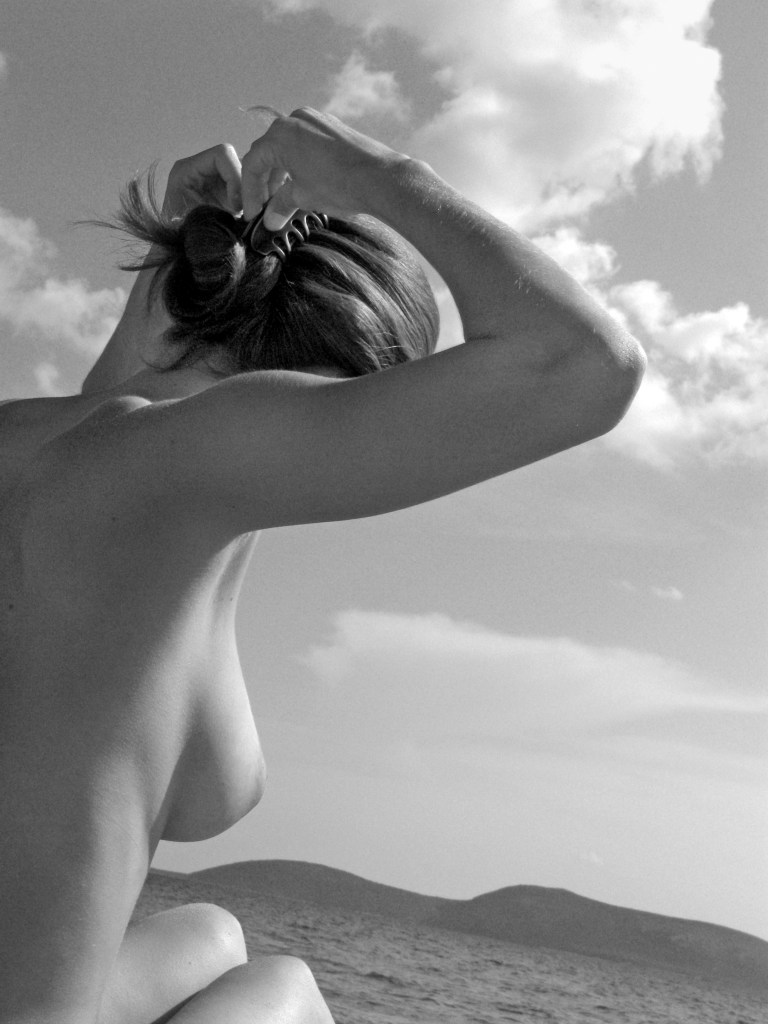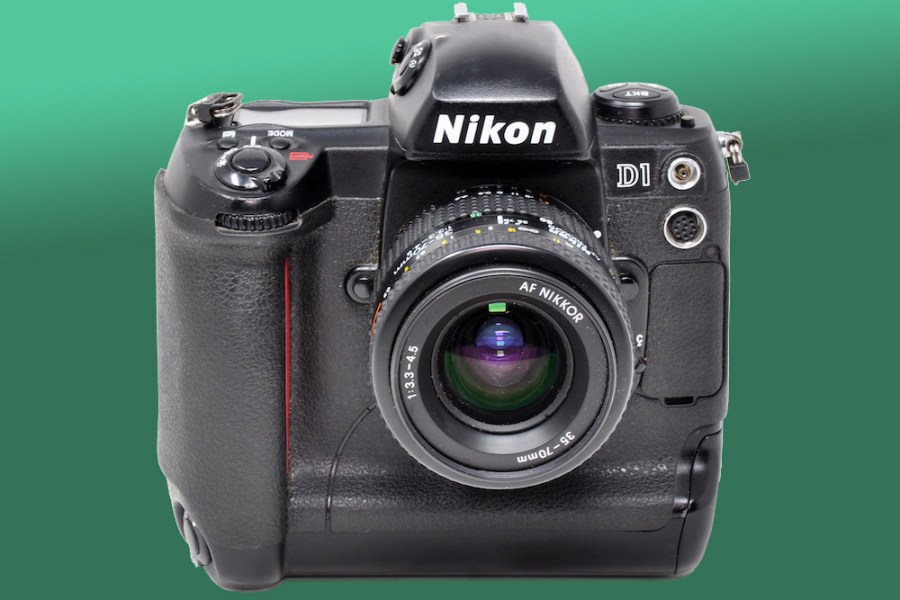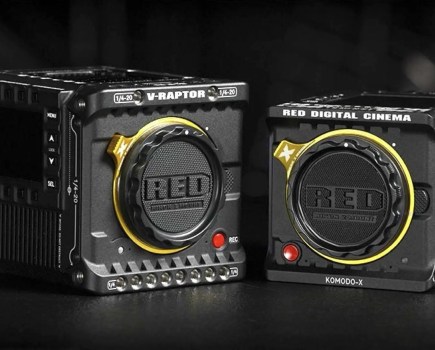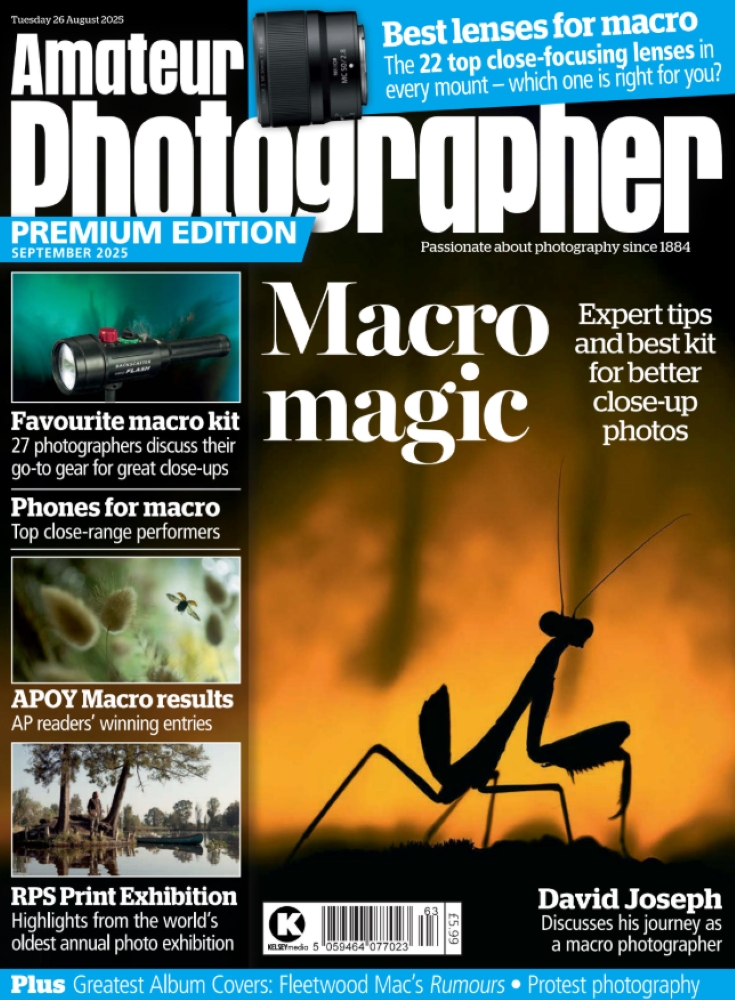We love moaning. The raw file won’t open, the firmware update wiped your settings. But spare a thought for the early adopters – when digital photography meant ghostly battery life, media cards that could barely hold a lunch break, colours that made everything look a bit ill. Top shooters reveal their early frustrations and breakthroughs…
“I was clearly shooting in single frame mode, with a 24 exposure mentality” Leon Neale, staff photographer at Getty Images
My first digital camera was a second-hand Nikon D1, bought while I was studying photojournalism at Sheffield College. After shooting film previously, it felt like magic to shoot a photo and have it on my laptop within moments. Recently I managed to get hold of one again and looking at the enormous battery, tiny low resolution screen and very basic buttons, was quite a shock – having had the pleasure of only using the latest gear for the last few years!

I guess I was one of the first generation to never have shot film professionally starting with The Times in 2003 so all those early years were shot on a variety of early systems.
I think the biggest challenge faced by photographers in the early years of digital was transmitting the photos. Mobile phone companies hadn’t considered that customers may want to transmit larger quantities of data at speed – every task involved inputting random codes and numbers into a bit of software called z-term to try to get a blistering 10kb/s upload speed!
I’ve always been into technology so really enjoyed the freedom that digital provided. As one of those weird people that reads the manual on a new camera, it was fascinating to come to terms with this new world. It’s hard to consider now but being able to change your ISO during a shoot was groundbreaking.
Boy – there were some stinkers in those first few years!
As digital was such a new technology, I sadly jumped into buying a few cameras without letting the reviews come in first. Boy – there were some stinkers in those first few years! Now, people will grumble if there are slight issues with elements of the menu system, but they should remember that the early cameras had upper ISO limits of 640 ISO and hideous magenta colour casts to every frame!

File size was something to consider too. Now, I can crop into the tiniest elements of a frame but loading these example frames up, the full resolution is less than 2000 pixels. It’s amazing how quickly we forget Looking back at my full output from jobs, I was still clearly in the film mindset. In total, I was coming away from pretty big jobs with maybe 20 frames. Crazy! I know we didn’t have the ridiculous frame rates of today but I was clearly shooting in single frame mode, with a 24 exposure mentality. Alongside getting used to the ISO variable, being able to shoot hundreds of images was clearly another new thing to consider!
“The biggest challenges were processing digital files correctly and having enough bandwidth to transmit them” Nick Danziger, photographer, filmmaker and travel writer
I’ve had a relationship with Olympus cameras for decades. As soon as I showed interest in a new model, they’d ship it to me. The first I used professionally was the E-1. I only went digital because I saw that’s where the future was heading, even if at first I was disappointed with the resolution compared to film and transparencies.
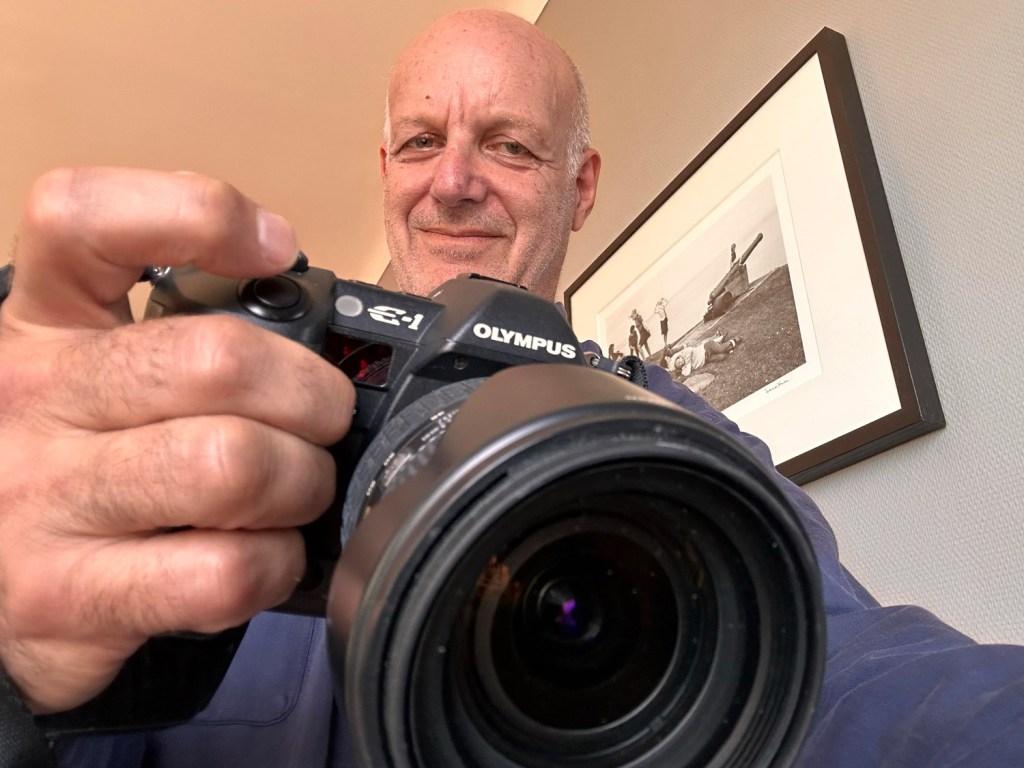
One of my early digital commissions was from NEWSWEEK, during John Kerry’s 2004 US Presidential campaign. I was also shooting Kodak Tri-X 400, so I had a lot to carry around the nearly 50 states we visited – sometimes three in a day. Digital came into its own – I could transmit images in minutes, while the black-and-white film had to be shipped to New York, processed, and made into contact sheets. During the campaign, Canon in the Netherlands lent me all the equipment I needed, as their digital gear was ahead of the rest at the time.
Whenever I received a new camera, I’d test the settings by photographing my kids at home – and instantly see results on screen. Over the years, Olympus kept me supplied with their latest models as technology advanced.
Initially, the biggest challenges were processing digital files correctly and having enough bandwidth to transmit them to photo desks. In remote areas like the Pamir in Afghanistan or the Afar region of Ethiopia, I stuck with film – there was often nowhere to charge batteries. But picture desks increasingly insisted on digital to cut costs, ignoring the time needed to process the files.
I do think digital has made many photographers lazy
At first, I felt completely outside my comfort zone. For me, it’s all about framing and being ‘in the zone’ – the camera an extension of my body. I could change settings on my SLR without looking. Like a plumber or electrician, it’s not the tools but the skill that matters. But when the tools change, you need time to learn what they can really do. Honestly, I felt very uncomfortable with digital at first. But unlike film, you don’t return from weeks of shooting unsure if your shutter worked or whether you got a decent, correctly exposed shot.
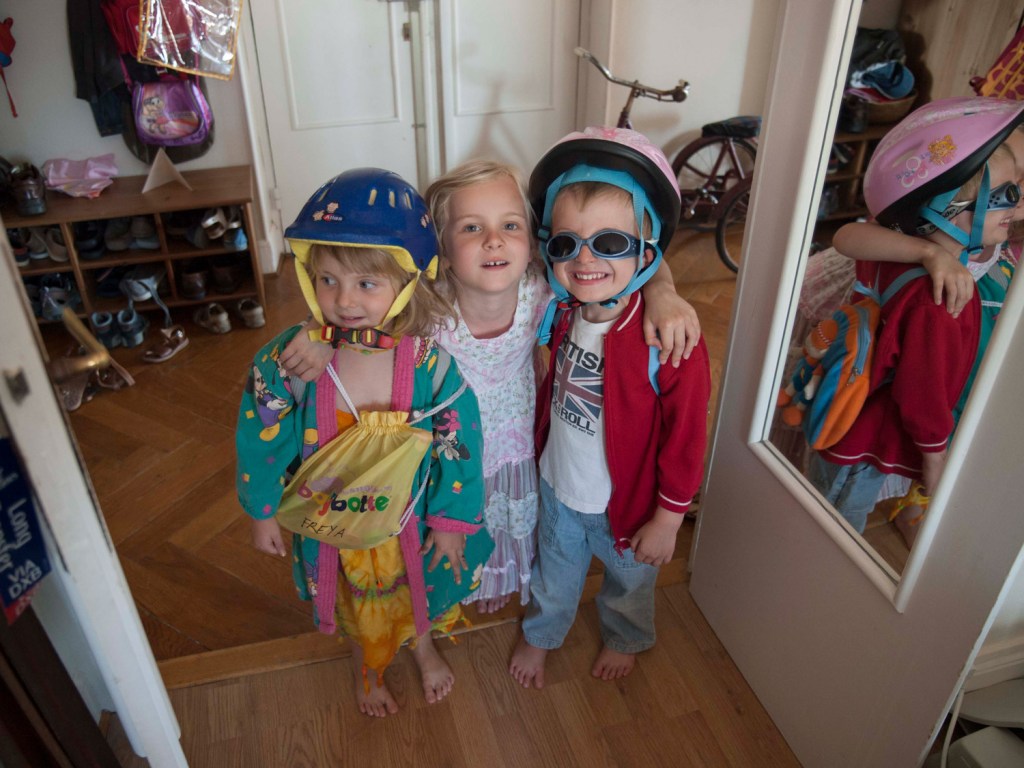
I do think digital has made many photographers lazy. With just 36 frames on a roll and costly processing, framing and timing had to be precise. You were in the zone – not distracted by checking the back screen to see if you got it right. So often the key moment is missed because your eye left the viewfinder – yes, I still use one! Each photo is a canvas, never to be cropped. Film gave you that rigour.
“Sensor cleaning was terrifying back then” Jenny Lewis, portrait and documentary photographer often focusing on long-term projects
God, I’ve got no bloody idea what my first digital camera was called. It was a Canon, around 2005—probably a Canon EOS-1Ds Mark II I think.
At first, all the picture editors were saying, “It’s fine, you can carry on shooting film.” Then, overnight, they were like, “We’re only accepting digital, okay?” The whole landscape changed. And it’s not like you got paid more – same fee, but nothing for processing or printing.

I can’t remember if I played with digital before using it on a commission, but I do remember a cover shoot with Thandie Newton. My childminder let me down that morning. Total chaos. Hair and makeup going on, 300 frocks lined up, I had a very specific brief to get the hair and make up tools in the shot and having a cuppa – I didn’t have the freedom to shoot her as I would have liked.
I looked at the screen and thought, something’s wrong – turned to my assistant and asked, “Why do the pictures look off?” But I had to pretend everything was fine. He checks and goes, “They’re all JPEGs.” I’m like, “What? Oh my God.” I told everyone I was just adjusting the lighting while he frantically tried to fix the settings. We think the camera must’ve reverted to factory settings after a sensor clean.
We were learning on really high-pressure shoots
Sensor cleaning was terrifying back then. You didn’t touch it—you sent it off. The cameras were still so new, and you didn’t want to start fiddling with menus on a big job. You weren’t even sure what you were changing. Looking back, it’s awful—we were learning on really high-pressure shoots. The assistants were starting from scratch – I couldn’t rely on their knowledge.
The shift to digital came at a huge moment for me. I was juggling motherhood and commercial work. Everything I knew about photography was film. I’d been a printer. I loved – felt confident in that world. Then suddenly, it was all gone. You had to adapt to survive.
Letting go of film was painful – like losing your love of photography. There were advantages. With small kids, I didn’t have time to be in the lab. I could shoot, go home, and edit in the evening. It would still be on the editor’s desk by morning. That gave me freedom.
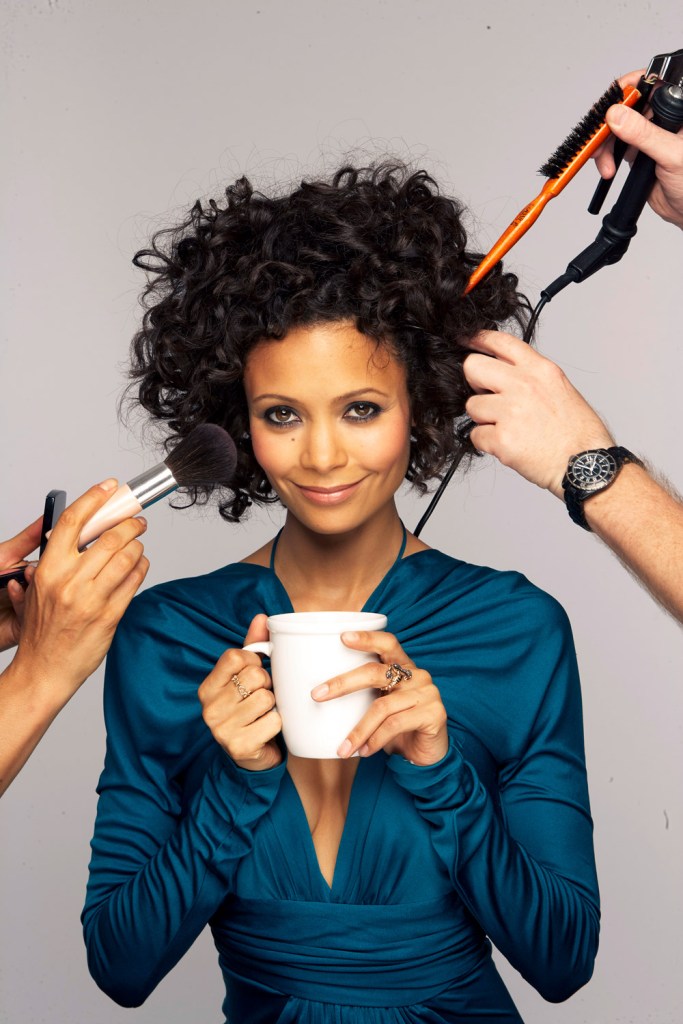
Creatively, it changed everything. I wouldn’t have done long-form projects if I’d had to pay for film – too expensive. Digital let me go deep – I could keep working on something for years, because the only cost was time.
That shift took me from editorial into book-making. It opened everything up, redefined my practice.
“I had no clue about colour balance to begin with” Alys Tomlinson, photographic artist working mostly in black & white analogue on a large-format camera
My first digital camera was a Canon EOS 20D with a 24-70mm lens (I think!). I used to shoot a lot for Time Out travel guides and went from using black and white film and colour transparency, to digital. It completely changed my workflow – I had to adapt quickly. It felt like overnight, nearly all commissioned work required digital. Some of my first digital shots were for travel guides to Miami, Venice, Naples and Copenhagen.
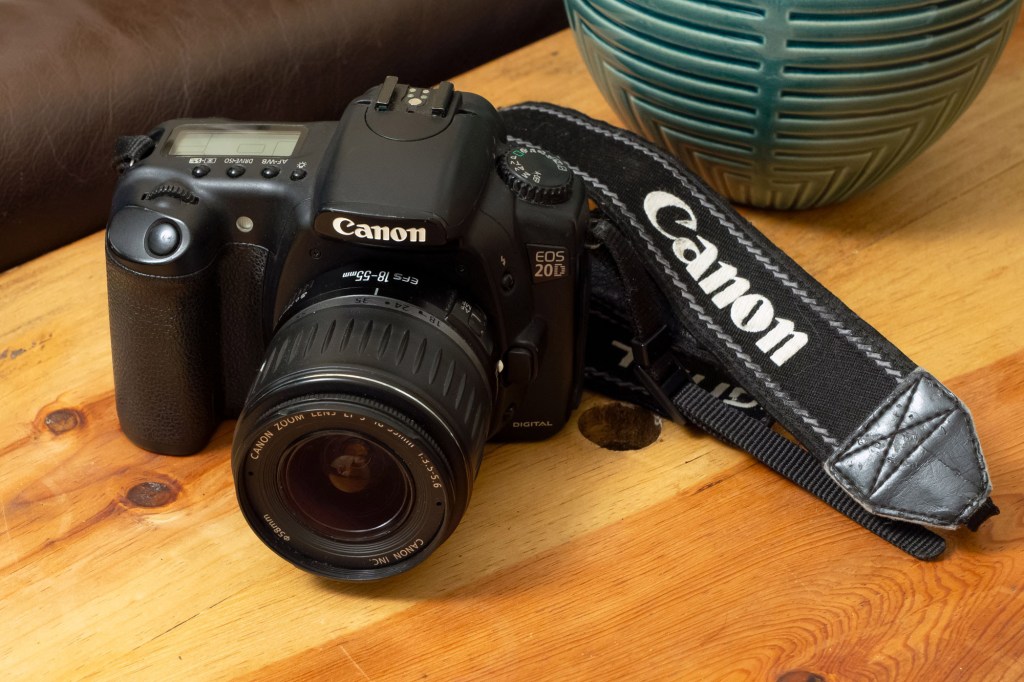
I had no clue about colour balance to begin with and had to teach myself post-production with a ‘Photoshop and Lightroom for Dummies’ book. It sent me into a panic. I remember the Picture Editor at Time Out saying that other photographers were struggling with the change to digital and loads of the images had a yellow or orange tinge. I also had no idea that cards needed formatting at first, so got into a bit of a muddle! Shooting digitally felt alien, complicated, and overwhelming at first. It was strange when people asked to see the photos immediately on the back of the camera, I felt like hiding the screen away. I liked the protection that film offered – I didn’t require or want people to comment on the images, especially before they’d had any treatment or post-production.
The cost of investing in new kit also seemed excessive
Initially, I was terrified as it felt like a completely different way of working, plus, I missed my time hanging out eating biscuits at Metro lab and the anticipation and excitement of getting film back. It felt like I was abandoning my craft and starting again. The cost of investing in new kit also seemed excessive – it was a reluctant move to digital.
The editing and downloading time required long days and clients demanded a very fast turnaround. I was often up until 2am in dingy hotel rooms, desperately responding to emails and finishing jobs. Digital did make it much easier in different lighting situations – with film, I was either using filters or moving between tungsten and daylight film and having to decide in advance on different film speeds.
I would tell myself not to get too anxious – to have more confidence in my ability to learn new skills.

I remember thinking my career was over when the industry switched to digital, but now I’m able to easily alternate between digital and film. Today, most of my commercial work is digital and my personal work is film. I still feel like a digital luddite, and I outsource any sophisticated retouching or high-end post work. I’ve moved on from the 20D! I used Canon 5Ds for years and recently bought a second-hand Fuji GFX medium format as part of a kit share with another photographer.
“Anything above ISO 800 was like painting with sand” Peter Dench, photographer and AP acting features editor
The once-in-a-lifetime commission came down to two candidates and one question: do you shoot digital? The other photographer said no – they preferred film on a Leica. Sensing the room, I said yes. I got the job.
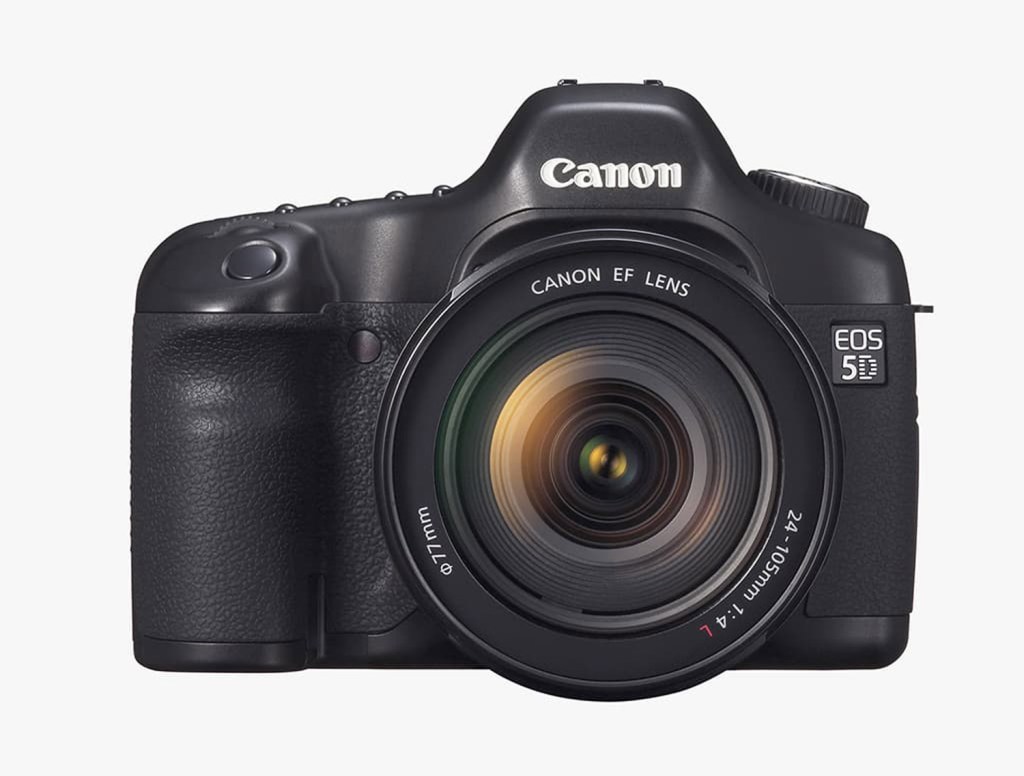
It was 2007. For over a decade I’d shot almost exclusively on medium format film – Mamiya 6 and 7. I was nearly convinced my style could translate to digital. This was the nudge I needed.
After the meeting, I called my mate Marcus Bleasdale to ask what camera system to buy. A few weeks later, I rang again for help navigating the menus and settings of my new Canon EOS 5D (and a spare). Released in 2005, it was a landmark: the first relatively affordable full-frame DSLR. A revelation at the time.
I lazily thought I’d learn on the job
Football’s Hidden Stories would explore the global reach and social impact of the beautiful game, far from the professional spotlight – 26 stories across 22 countries in 15 months. From refugee camps to war zones, remote villages to inner-city streets, it captured how football is played, loved, and lived in the most unexpected places. I lazily thought I’d learn on the job. The first trip took me to the barrios marginales of Bogotá and Cartagena. I remember the moment I felt I’d taken a good digital photo – a lad sat on a wall cleaning his boots next to a soldier – looking at it now it’s soft!
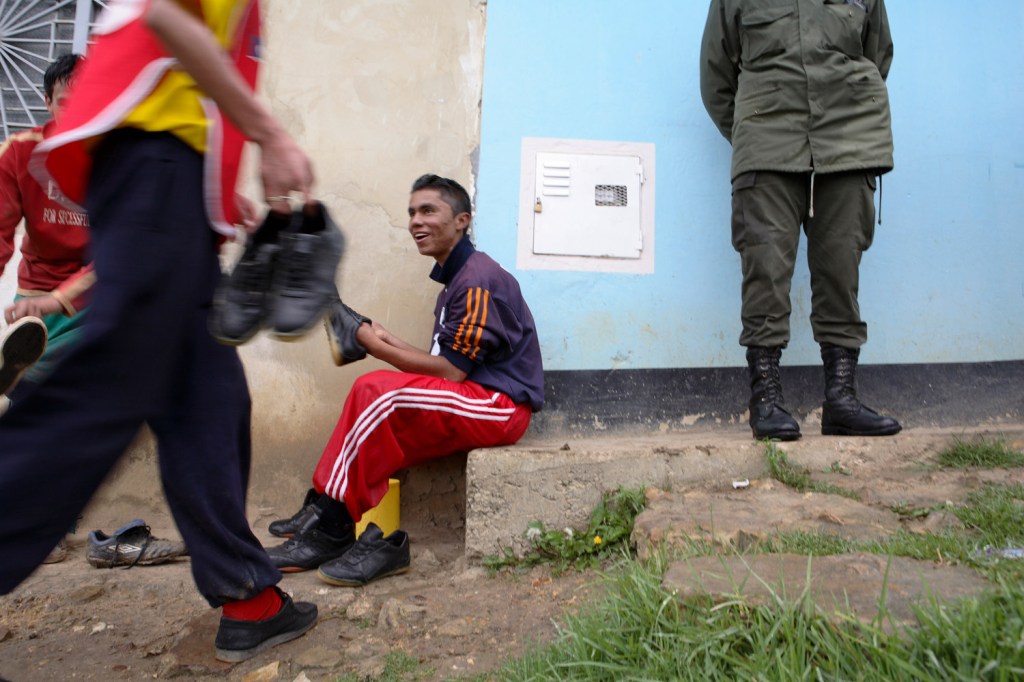
Looking back, anything above ISO 800 was like painting with sand. In low light, noise came fast, and detail fell off a cliff. Today’s ISO 3200 looks like ISO 400 did then. The rear LCD was tiny – 2.5 inches – and not much help for judging focus or exposure. No proper zoom-in, no live view. You chimped – and guessed.
The 5D was a brick by modern standards – no flip screen, no touchscreen, no custom modes. But I learned fast. The reportage went on to win six global accolades. Not a bad start.
“By the end of the first morning I was deleting the least worst files!” Gavin Hoey, freelance photographer and photographic educator
For me digital photography started shortly after my daughter was born and my cherished darkroom became a nursery. I don’t recall how I settled upon the Olympus C-2020 Z for my first digital camera back in 1999, but I do remember it being a revelation. Colour images that I could see instantly, edit in Paint Shop Pro and print out within an hour! I sold ALL my darkroom gear almost immediately.

The little 2 million pixel camera got me my first paid job in publishing. I managed to talk my way into a freelance job writing ‘how to’ articles for the late, great Digital Photo Magazine and the C-2020 Z was responsible for capturing all of the images I used in the tutorials. It wasn’t until several years later, when the magazine editor brought in a rule for freelancers that insisted on images greater than 4 megapixels, that I upgraded from the Olympus compact to a Fuji bridge camera.
I started out as the butt of jokes
I found the switch from film to digital to be a really smooth experience in every way except one. I can still vividly remember my first proper trip out with the 2mp 2020Z. It was a city break to Venice, I splashed out on a 32MB (note, not GB) SmartMedia card which gave me roughly the equivalent of 3 or 4 rolls of fill. Back when I paid pre photo with film, that would have been plenty but with digital… by the end of the first morning I was deleting the least worst files!
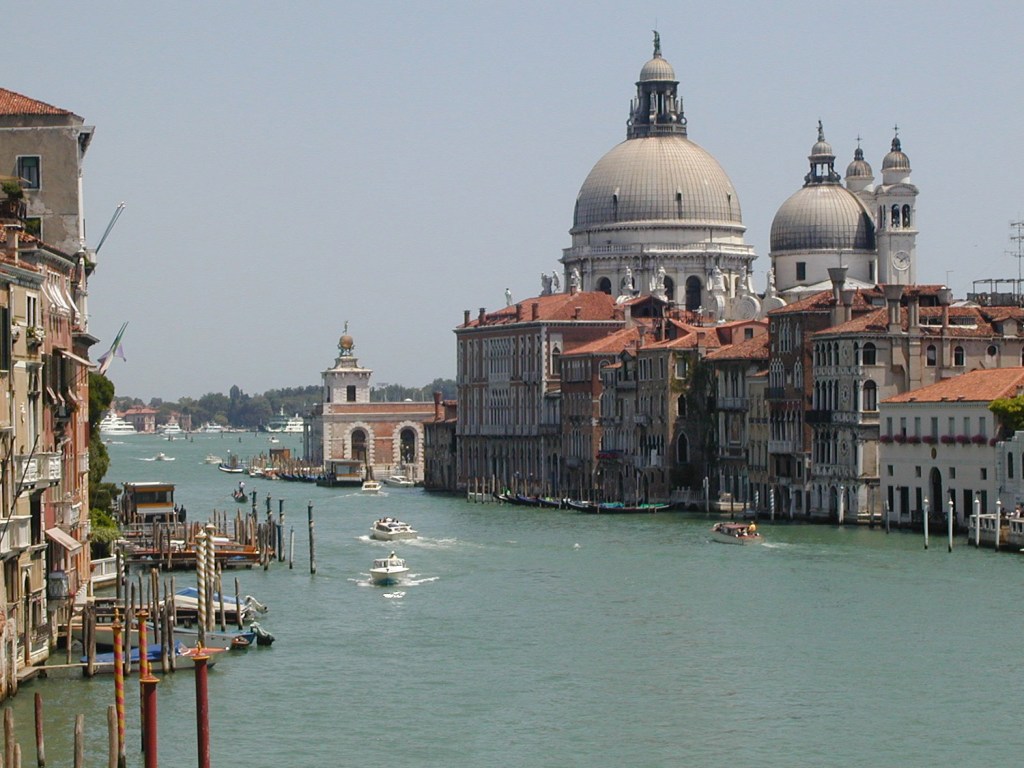
The early days of digital cameras were wild. I can still recall being at a camera club workshop where everyone had film cameras except me. I started out as the butt of jokes until I showed them my photos on the tiny 1.5” LCD and then I branded a cheat… happy days!
“There was just so much more to carry—wires, chargers, extra bags” Jon Nicholson, photographer with a career of 40 years, who travels globally working on long-term projects
I think my first digital camera was an Olympus CL1400—or something like that. I steered clear of digital for as long as I could, only really embracing it around 2003. That year, I started using the Olympus E-1 system for a three-year commission with Ferrari F1. Quite a leap, considering I was deeply suspicious of the whole digital movement.

Early on, it just felt too slow, especially when shooting action. I found it really underwhelming. The short lens stuff was manageable, and I have to say, the files were surprisingly good—especially the reds, which Ferrari were very particular about. It was a great lesson that file size isn’t everything; we produced some huge prints that looked fantastic.
I didn’t really start enjoying digital photography until I got into the Nikon D3 series
Still, I couldn’t quite believe we were going down this digital path. There was just so much more to carry—wires, chargers, extra bags. It all felt like a step backwards in some ways. I didn’t really start enjoying digital photography until I got into the Nikon D3 series—D3, D3s, D3X—and eventually the Leica M9, M10, and the Monochroms. But even then, the files started getting too sharp for my taste, which is part of why I’ve gone back entirely to film.
That said, I did fully embrace digital while I was using it and shot some really interesting stories for major magazines. If I could go back and give myself some advice, I’d say: stick to what you know, shoot less, and don’t edit unless absolutely necessary—like when working for newspapers. And don’t get seduced by tech. One of the biggest mistakes I ever made was walking into Adorama in New York in 2005 and trading in three Leica M6s for a Canon 5D and a couple of lenses. I walked out of the shop knowing I’d made a huge error—only to be followed down the street by a guy yelling, “You fool, what have you done?!”
He was right.
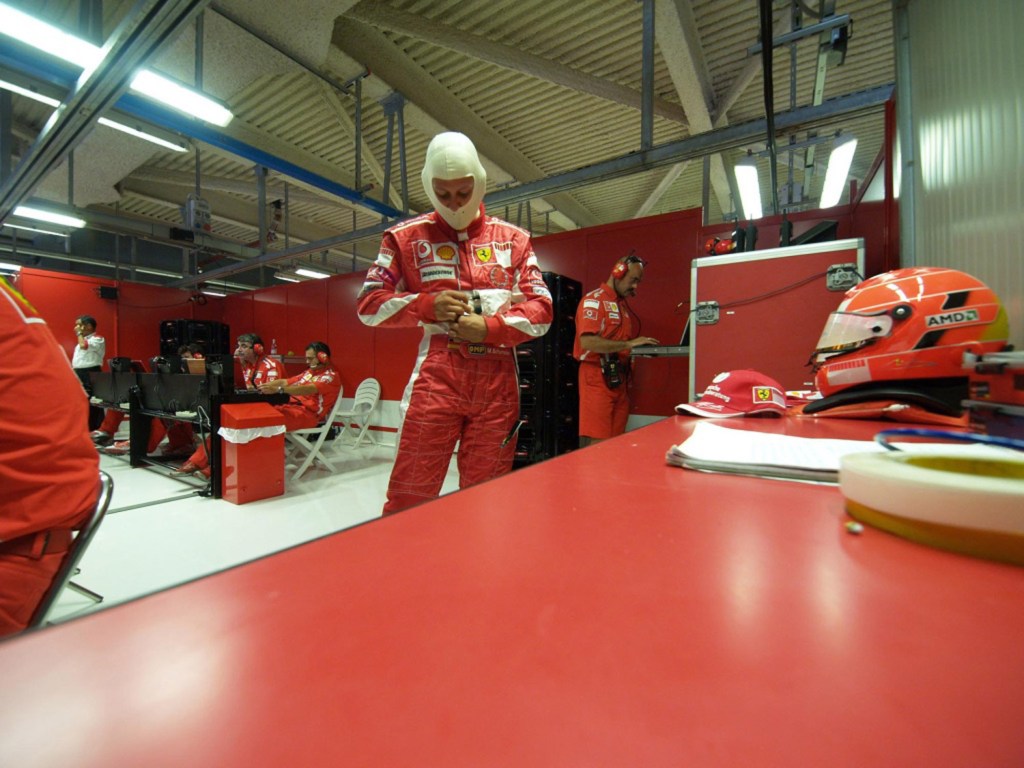
“The buffer was so slow and the zoom so sluggish” Jocelyn Bain Hogg, documentary photographer and educator
I’d only used borrowed digital Canon and Epson RD cameras once before—at the 2005 Cannes Festival, shooting for Le Monde. I learned their quirks on the fly. But the real test came later that year when Kodak asked me to trial a new prototype – Kodak P880 Zoom digital camera. They’d pioneered the digital SLR chip, and back then were seen as innovators, changing photography forever.
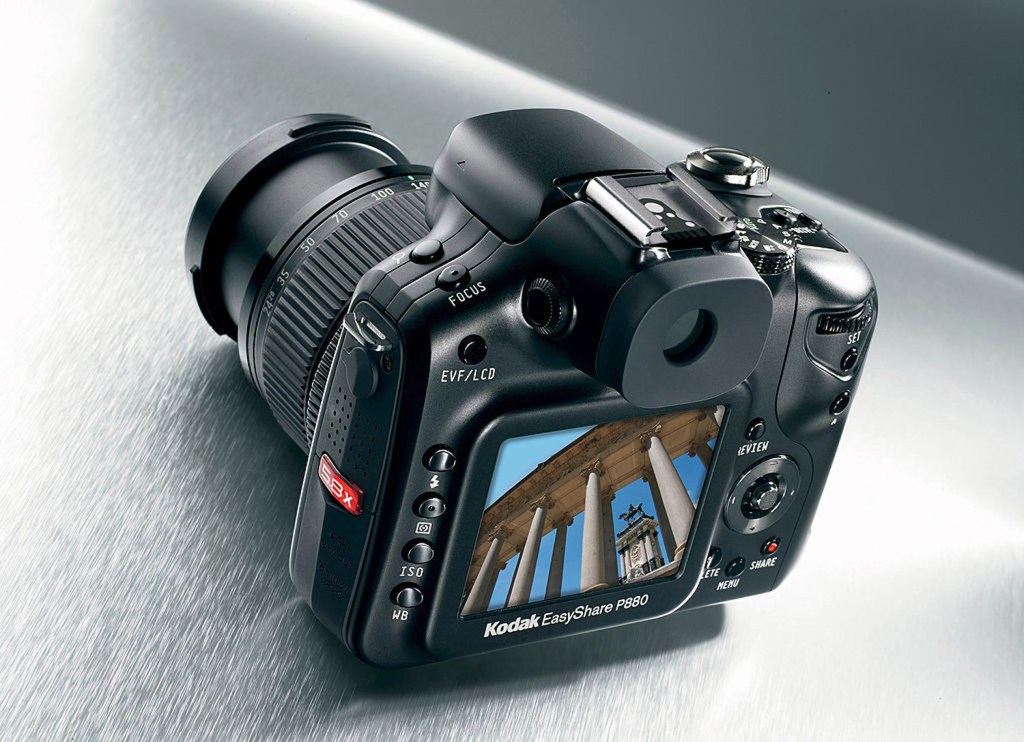
This was a factory-fresh hybrid point-and-shoot with a razor-sharp Schneider lens—top of the range, all singing, all dancing for its time. I took it to the Visa Pour L’Image festival in Perpignan that September, where we were staying in a plush house with palm trees, tropical plants and a tortoise that roamed the garden.
ISO capped at 400
Keen to test it out, I fiddled with the diddy buttons—‘fine’ JPEG was the best it offered (8MB, no Raw), ISO capped at 400, and a 4:3 aspect ratio. I set up, lined up the tortoise… and missed the shot. The buffer was so slow and the zoom so sluggish that by the time it focused, the tortoise had wandered out of frame. So much for Kodak’s old slogan: You press the button, we do the rest.
Still, I took it on holiday to Mani in Greece, inspired by Patrick Leigh Fermor. By then, I knew not to shoot anything that moved. I’d promised Kodak a proper run before writing it off—and my pride was on the line.
The lens was its saving grace: detailed, sharp, and decent close up. On a deserted Peloponnesian beach, I photographed my partner, drawing on my fashion days. It was a learning curve in digital.
Hard to believe this was once state of the art—and how far we’ve come. Kodak, once a giant, has all but vanished from photography. But one print from that trip—a “20×30” black and white, beautifully printed by Metro in London—still hangs on my wall. So it wasn’t all bad.
